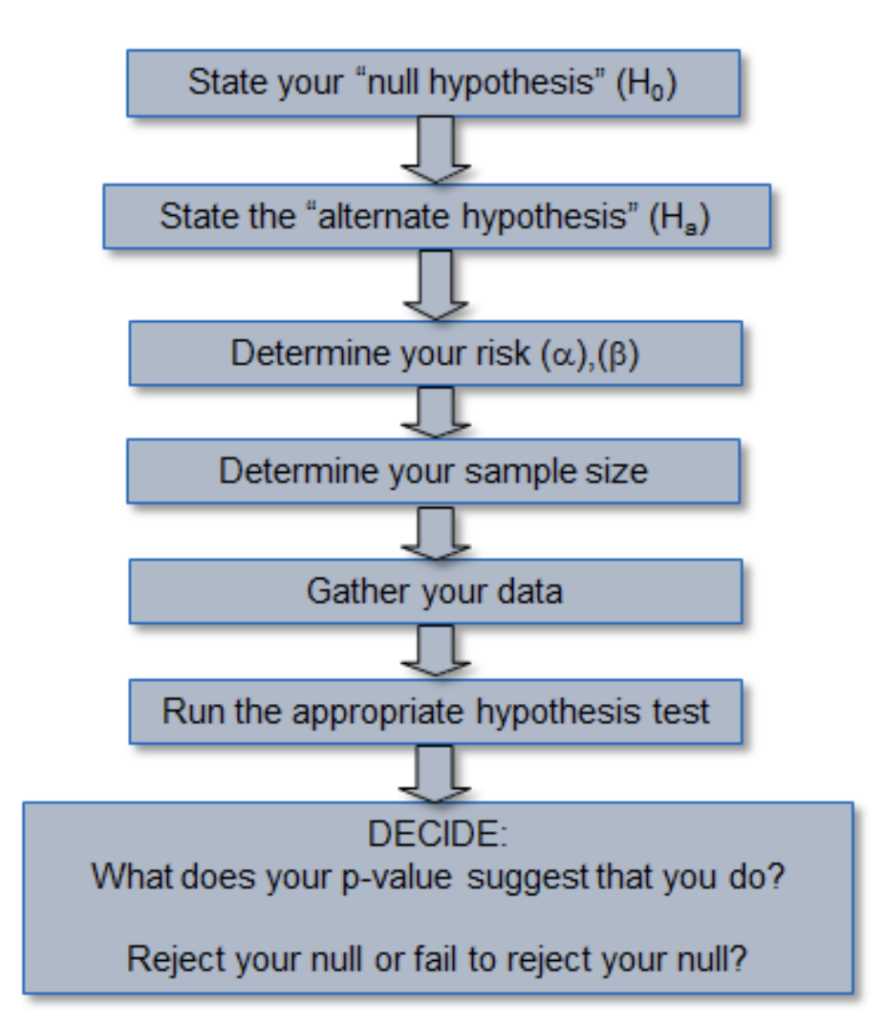
Laboratory safety is a critical aspect of any scientific experiment or research endeavor. It is crucial to follow specific protocols and guidelines to ensure the well-being of scientists, researchers, and the surrounding environment.
In this third part of our “Test the Hypothesis” series, we will focus on the importance of lab safety. We will explore the potential hazards in a laboratory setting and discuss ways to minimize these risks.
One of the most common hazards in a laboratory is chemical exposure. Many experiments involve the use of toxic or corrosive substances that can cause harm if mishandled or improperly stored. It is essential to wear appropriate personal protective equipment, such as gloves, goggles, and lab coats, to minimize the risk of chemical exposure. Additionally, proper ventilation and storage procedures should be followed to ensure a safe working environment.
Another significant hazard in a laboratory is the potential for accidents or injuries caused by equipment or glassware. Researchers should be familiar with the proper operation and handling of laboratory equipment. It is crucial to report any damaged or malfunctioning equipment and to use caution when working with fragile glassware to avoid cuts or punctures.
Why Lab Safety is Important

Lab safety is of paramount importance in a scientific environment. It is crucial to ensure the well-being of the individuals working in the laboratory and to prevent accidents that could result in injury or even death. A culture of safety should be instilled in every laboratory setting, from educational institutions to professional research facilities.
One reason why lab safety is important is to protect against hazardous substances. Many experiments involve working with chemicals, some of which can be harmful or toxic. Proper handling, storage, and disposal of these substances are essential to minimize the risk of exposure and potential health effects. Safety measures such as wearing protective clothing, using designated fume hoods, and following proper protocols can significantly reduce the likelihood of accidents or chemical exposures.
Another crucial aspect of lab safety is preventing physical hazards. Laboratories often contain equipment and machinery that can pose risks if not used properly. For example, centrifuges, heat sources, or glassware can cause cuts, burns, or other injuries if mishandled. Preventative measures such as wearing appropriate personal protective equipment (PPE), using equipment correctly, and maintaining a clean and organized workspace can help minimize these risks.
Furthermore, lab safety is important to prevent fires or explosions. Certain experiments and procedures may involve flammable substances or reactions that can lead to dangerous situations. Proper storage and handling of flammable materials, having fire extinguishers readily available, and conducting experiments in controlled environments are critical safety measures to mitigate the risk of fires or explosions.
Additionally, lab safety plays a vital role in preventing contamination and maintaining the integrity of experiments. Cross-contamination of samples or materials can compromise the accuracy and reliability of scientific results. Practicing good laboratory hygiene, following strict sterilization procedures, and maintaining aseptic techniques are essential for conducting valid experiments and ensuring the validity of research findings.
In conclusion, lab safety is a crucial component of any scientific environment. By implementing appropriate safety measures and fostering a culture of safety, the risks associated with working in a laboratory can be significantly minimized. It is the responsibility of everyone involved to prioritize and adhere to safety protocols to protect themselves and others while carrying out scientific research and experiments.
Understanding the Risks
When conducting any scientific experiment or lab activity, it is crucial to have a clear understanding of the risks involved. By being aware of potential hazards, researchers can take necessary precautions to ensure their safety and the safety of others in the lab.
Chemical hazards: One of the main risks in a laboratory setting is exposure to hazardous chemicals. These chemicals can range from corrosive acids to toxic substances and can pose serious health risks if not handled properly. It is important to always wear appropriate personal protective equipment (PPE) such as gloves, goggles, and lab coats when working with chemicals. Additionally, proper ventilation and storage of chemicals are essential in preventing accidents or chemical spills.
Fire hazards: Labs often contain flammable materials, such as solvents and combustible gases. It is crucial to have fire prevention measures in place, including the availability and knowledge of how to use fire extinguishers. Ensuring that all flammable materials are properly stored and that all equipment and electrical systems are in good working condition can help minimize the risk of fires.
Physical hazards: Lab activities can also involve physical risks, such as sharp objects, high temperatures, and potential for explosions. Researchers should exercise caution when handling sharp tools and hot equipment, and always follow the proper procedures for handling potentially explosive substances. It is also important to maintain a clean and clutter-free workspace to prevent accidents and injuries.
- Chemical hazards
- Fire hazards
- Physical hazards
By understanding and actively addressing these risks, researchers can create a safer lab environment and ensure the success of their experiments without compromising their well-being.
Safety Measures and Protocols

Proper safety measures and protocols are crucial in any laboratory setting to ensure the well-being of all individuals involved and maintain a safe working environment. These measures are designed to minimize the risk of accidents, injuries, and exposure to hazardous substances.
Personal Protective Equipment (PPE) is a fundamental aspect of laboratory safety. This includes wearing appropriate attire such as lab coats, goggles, gloves, and closed-toe shoes. PPE provides protection against potential hazards such as chemicals, biological materials, and physical hazards that may be present in the laboratory.
- Chemical Safety: Chemicals are often a prominent part of laboratory work, and it is crucial to handle them with caution. Proper storage, labeling, and handling of chemicals are essential to prevent accidents or unintended reactions. Before using any chemical, researchers should be aware of the potential hazards and follow the appropriate protocols for handling, storage, and disposal.
- Biological Safety: When working with biological materials, it is vital to follow specific safety guidelines to prevent the spread of disease and ensure the well-being of both researchers and the environment. This includes proper handling, containment, and disposal of biological materials, as well as the use of appropriate personal protective equipment.
- Equipment Safety: Regular maintenance and inspections of laboratory equipment are essential to ensure their safe and efficient operation. Users should be trained on the proper use of equipment, and any malfunctioning equipment should be reported and repaired promptly. Additionally, electrical safety measures should be followed, such as avoiding overloaded circuits and using grounded outlets.
Emergency preparedness is another crucial aspect of laboratory safety. All individuals working in the lab should be familiar with emergency protocols, including evacuation procedures, location of emergency exits and equipment, and the proper use of fire extinguishers and safety showers. Regular drills should be conducted to ensure everyone knows how to respond quickly and effectively in case of an emergency.
Furthermore, strict adherence to standard operating procedures (SOPs) and safety guidelines is vital in maintaining a safe laboratory environment. Researchers should be trained in these procedures and be aware of the potential risks associated with their experiments. Regular communication and awareness of safety protocols help to reduce accidents and promote a culture of safety in the laboratory.
Proper Handling of Chemicals

Handling chemicals properly is essential for ensuring the safety of laboratory personnel and the integrity of experiments. Improper handling of chemicals can lead to accidents, injuries, and even environmental damage. Therefore, it is crucial to follow strict guidelines and protocols when working with chemicals in a laboratory setting.
Storage: Proper storage of chemicals is the first step in their safe handling. Chemicals should be stored in designated areas, such as flammable cabinets or corrosive storage units, depending on their properties. It is important to label all containers clearly with the name of the chemical, its hazard symbols, and any other relevant information.
Personal Protective Equipment (PPE): Wearing appropriate PPE is essential when handling chemicals. This includes gloves, lab coats, safety goggles, and closed-toe shoes. PPE helps protect against chemical splashes, spills, and inhalation of harmful fumes or vapors. It is important to choose the right type of PPE based on the hazards associated with the chemicals being used.
Handling and Mixing: When handling chemicals, it is important to follow proper techniques to minimize the risk of accidents. This includes using proper equipment, such as pipettes, beakers, or flasks, and avoiding direct contact with the skin or eyes. Chemicals should be mixed slowly and carefully, following the specific instructions provided, to avoid any unexpected reactions or releases of hazardous substances.
Disposal: Proper disposal of chemicals is critical for maintaining a safe laboratory environment and preventing environmental contamination. It is important to follow all local, state, and federal regulations when disposing of chemicals. This may involve neutralization, dilution, or recycling of the chemicals, depending on their properties. It is crucial to never dispose of chemicals down the sink or in the regular trash unless it is approved by the appropriate authorities.
Emergency Preparedness: In the event of a chemical spill or accident, it is important to be prepared. Laboratory personnel should be trained in proper emergency procedures and have access to emergency eyewashes, showers, and spill kits. It is crucial to know the location of emergency exits and fire extinguishers. Regular safety drills and training sessions should be conducted to ensure everyone is familiar with the proper protocols.
By following these guidelines and implementing strict safety measures, laboratory personnel can ensure the proper handling of chemicals and create a safe working environment. It is important to stay vigilant, constantly update safety protocols, and prioritize the well-being of all individuals working in the laboratory.
Importance of Personal Protective Equipment (PPE)
Personal Protective Equipment (PPE) is a crucial aspect of lab safety and plays a significant role in protecting individuals from potential hazards and accidents. It refers to specialized clothing, equipment, and gear designed to shield individuals from various workplace hazards and minimize the risk of injury or illness.
One of the primary reasons why PPE is of utmost importance is that it provides a physical barrier between the person and the hazardous substances or conditions present in the laboratory. This barrier helps prevent direct contact and exposure to chemicals, biohazards, radiation, and other potential dangers. PPE acts as a protective shield, reducing the chance of injuries or illnesses that could have serious consequences.
Lab coats and gloves: Lab coats and gloves are essential pieces of PPE that provide protection against chemical spills and splashes. They are made of durable materials that can withstand exposure to chemicals and prevent them from coming into contact with the skin. Additionally, lab coats often have long sleeves and come with closures like buttons or zippers to ensure a secure fit and minimize the risk of accidental exposure.
- Full face shields and safety goggles:
Another critical aspect of PPE is the use of full face shields and safety goggles. These protective eyewear options safeguard the eyes and face from potential impact, chemical splashes, and flying particles. They form a barrier between the sensitive eye area and any hazardous substances that may be present in the lab environment.
Respiratory protection: In some situations, respiratory protection may be necessary to prevent inhalation of harmful substances, such as chemical vapors or airborne particles. Respirators, masks, and other respiratory protective equipment are designed to filter out contaminants and ensure that the individual breathes clean air. They play a vital role in minimizing the risk of respiratory illnesses or injuries.
By utilizing appropriate PPE, individuals can significantly reduce their exposure to hazardous substances, thereby promoting a safer working environment in the laboratory. It is crucial for everyone to understand the specific PPE requirements for different tasks and to ensure that they are worn correctly and consistently to maintain their effectiveness.
Emergency Preparedness
In the laboratory, safety is of utmost importance. One aspect of laboratory safety is emergency preparedness. It is crucial to be prepared for any unforeseen situations that may arise during experiments or other activities in the lab.
Emergency procedures:
- Know the location of emergency exits, fire extinguishers, and first aid kits. Make sure these items are easily accessible and in good working condition.
- Be familiar with the emergency procedures specific to your lab or workplace, including evacuation routes and protocols.
- In the event of an emergency, remain calm and follow the instructions provided by your lab supervisor or emergency personnel.
Personal protective equipment (PPE):
- Always wear appropriate PPE, such as gloves, safety goggles, and lab coats, as directed by your lab supervisor.
- Make sure your PPE fits properly and is in good condition. Replace or repair any damaged or worn-out equipment.
- Know how to properly use and remove PPE to minimize the risk of contamination or injury.
Chemical safety:
- Handle chemicals with care and follow all safety guidelines provided by your lab supervisor or in the material safety data sheet (MSDS).
- Store chemicals in appropriate containers and cabinets, and ensure they are properly labeled.
- Be aware of the potential hazards of the chemicals you are working with and take necessary precautions to minimize risks.
Fire safety:
- Know the location of fire extinguishers and how to use them. Keep them unobstructed and regularly inspected.
- Do not block fire exits or emergency routes with equipment or other materials.
- If a fire breaks out, activate the fire alarm and evacuate the premises following the designated evacuation routes.
By being well-prepared and following proper safety protocols, you can help create a safe working environment in the laboratory and minimize the risks associated with various experiments and activities.
The Role of Safety Training and Education in Lab Safety
In conclusion, safety training and education play a crucial role in promoting lab safety. By providing employees with the necessary knowledge and skills, organizations can create a safe and secure working environment that minimizes the risk of accidents and injuries.
Safety training and education help to:
- Develop awareness: Employees are made aware of the potential hazards and risks associated with lab work. This enables them to recognize and anticipate dangers, ensuring that they take appropriate precautions.
- Instill best practices: Through training, employees learn and adopt best practices for handling hazardous materials, using equipment, and executing experiments. This reduces the likelihood of accidents and increases the overall efficiency of lab operations.
- Promote a safety culture: Safety training and education foster a culture of safety where all employees prioritize and actively participate in ensuring a safe working environment. This includes reporting potential hazards, maintaining cleanliness and orderliness, and following safety protocols.
- Ensure compliance: Organizations that provide safety training and education ensure compliance with regulatory standards and guidelines. This protects both the employees and the organization from legal repercussions.
It is important for organizations to invest in ongoing safety training and education programs. These programs should be regularly updated to reflect new advancements in lab safety and to address emerging risks. By implementing a comprehensive safety training and education strategy, organizations can minimize the occurrence of accidents, protect their personnel, and maintain a productive and successful lab environment.